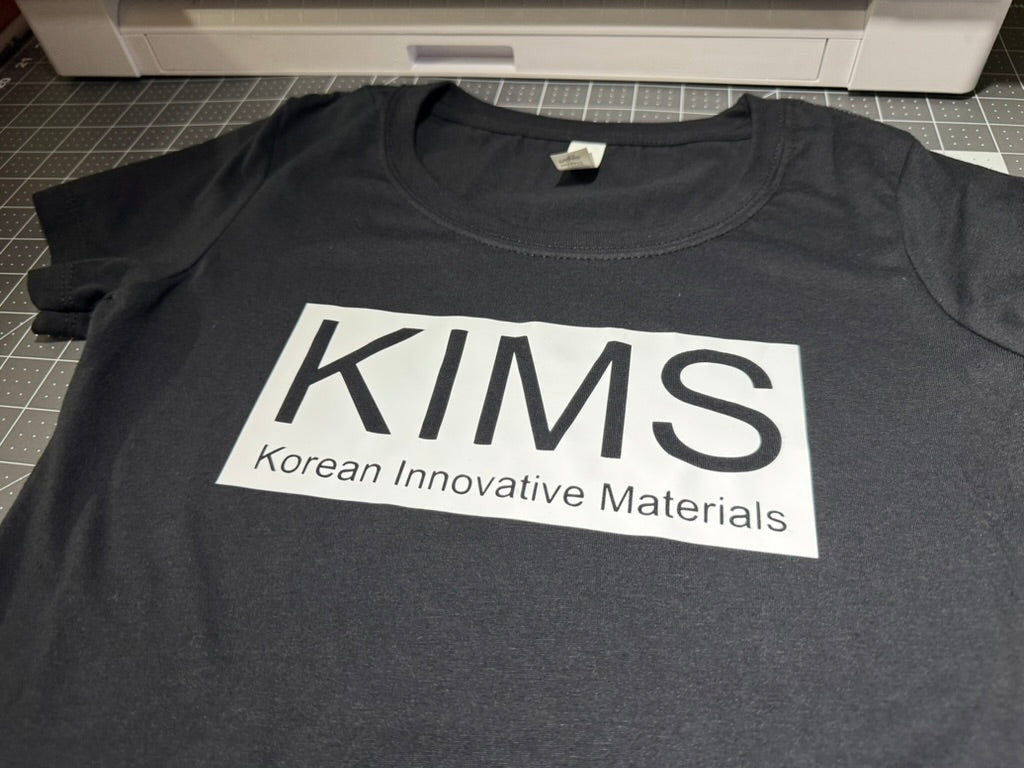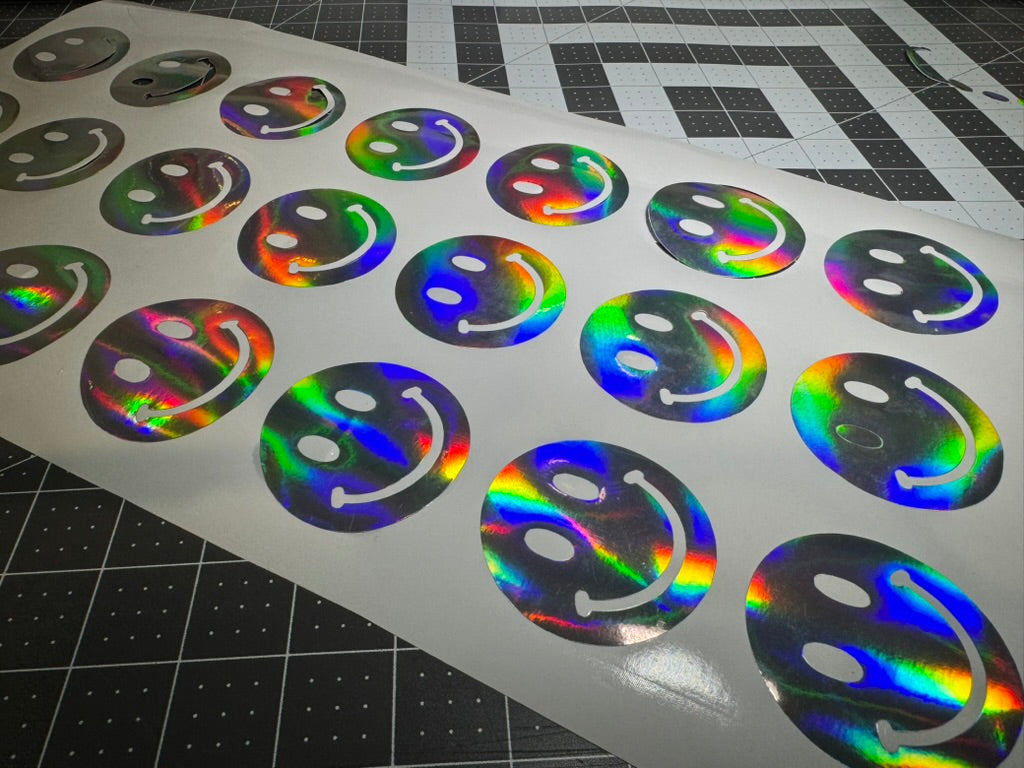Introduction
Printable vinyl is used to create custom graphics on apparel, stickers, signs, and other surfaces using inkjet or solvent-based printers. It combines the flexibility of vinyl with a printable surface that can accept ink. When used correctly, printable vinyl allows for full-color, detailed designs.
However, printing on vinyl can sometimes lead to technical issues. Three of the most common problems are banding, color bleeding, and alignment errors. These issues can affect the clarity, color, and placement of a design.
Each of these problems has its own causes, often related to printer settings, material handling, or maintenance. Identifying the symptoms and understanding what causes them is the first step toward resolving the issue.
Common Printable Vinyl Issues
Printable vinyl is a material with a coated surface that accepts ink and a backing layer that's removed before application. When working with this versatile material, you might encounter three main printing challenges:
-
Banding: Horizontal or vertical lines that appear across your printed design
-
Color bleeding: Colors that blur or spread beyond their intended boundaries
-
Alignment issues: Printed images that don't match up with cut lines
These problems can disrupt your workflow and result in wasted materials. For businesses and crafters alike, understanding how to identify and fix these issues is essential for consistent, professional results.
|
Issue |
What It Looks Like |
Common Cause |
|---|---|---|
|
Banding |
Horizontal stripes or lines |
Clogged printhead nozzles or incorrect feed settings |
|
Color Bleeding |
Fuzzy edges, colors mixing together |
Too much ink or insufficient drying time |
|
Alignment Errors |
Cuts that don't follow the design edges |
Improper calibration or material movement |
Let's explore each of these issues and learn how to solve them effectively.
Why Banding Occurs In Vinyl Printing
Banding shows up as visible horizontal or vertical lines across your printed vinyl. These lines appear as lighter or darker streaks that make your colors and gradients look uneven.
The most common cause of banding is clogged printhead nozzles. When ink can't flow freely through some nozzles, it creates gaps in your print. Another frequent cause is improper feed calibration - if your printer moves the vinyl at the wrong speed, it creates uneven ink distribution between passes.
You might also experience banding due to inconsistent ink flow. This happens when:
-
Your ink supply is running low
-
Air bubbles get trapped in the ink lines
-
The ink system isn't maintaining steady pressure
Material handling problems can contribute to banding too. If the vinyl isn't loaded correctly or has uneven tension, it may shift during printing, creating those unwanted lines.
Horizontal banding usually points to issues with ink delivery or material feed, while vertical banding typically indicates problems with printhead alignment or mechanical movement in the printer's carriage system.
How To Fix And Prevent Banding
1. Clean Printhead Nozzles
Clogged nozzles are a primary cause of print banding. Most printers have a built-in cleaning function in the maintenance menu. Run this first to clear minor clogs.
For stubborn clogs, you might need to perform manual cleaning:
-
For automatic cleaning: Access your printer's utility menu and select the cleaning option
-
For manual cleaning: Follow your printer manual's instructions for removing and cleaning printheads
Clean your printheads weekly if you print frequently, or before each use if your printer sits idle for long periods. Look for missing lines in test prints as a sign that cleaning is needed.
2. Calibrate Printer Feed And Pass Settings
Proper feed calibration ensures your vinyl moves through the printer at the correct rate. When the feed rate is off, you'll see banding as the printer creates gaps or overlaps between passes.
"Passes" refers to how many times the printhead moves over the same area. More passes generally produce smoother prints with less banding:
-
2-pass: Faster printing but more likely to show banding
-
4-pass: Good balance of speed and quality
-
6-pass or higher: Best quality, especially for detailed work
Most printers let you print a test pattern to check alignment and ink distribution. If you see uneven lines, adjust your feed rate settings according to your printer's manual.
3. Adjust Print Speeds And Passes
The speed at which your printer operates affects print quality. Slower speeds allow more precise ink placement but take longer to complete.
For detailed vinyl prints or smooth gradients, consider:
-
Reducing print speed by 25-50%
-
Increasing pass count to 4 or 6 passes
-
Using bidirectional printing only for draft quality
This table shows how different settings affect your results:
|
Print Speed |
Pass Count |
Best For |
|---|---|---|
|
High |
2-pass |
Draft prints, solid colors |
|
Medium |
4-pass |
General purpose printing |
|
Low |
6+ pass |
Detailed graphics, gradients |
4. Check Material Handling And Tension
How you load vinyl into your printer significantly impacts print quality. Improper loading can cause the material to move during printing, creating banding.
For proper vinyl loading:
-
Align the vinyl straight with the feed rollers
-
Ensure consistent tension across the width
-
Use the proper pressure settings for your material thickness
Different vinyl weights require different handling approaches:
-
Lightweight vinyl (under 3 mil): May need a carrier sheet for stability
-
Medium vinyl (3-7 mil): Standard pressure settings usually work well
-
Heavy vinyl (over 7 mil): May require reduced pressure to prevent stretching
Always store vinyl rolls in a climate-controlled environment and handle them by the edges to prevent oils from your hands affecting the printable surface.
Solving Color Bleeding On Printable Vinyl
Color bleeding happens when ink spreads beyond where it should, creating fuzzy edges and muddled details. This problem is especially frustrating when you're creating stickers, labels, or any design that needs clean, sharp edges.
1. Reduce Ink Saturation
Too much ink on the vinyl surface is a leading cause of bleeding. Most printer software allows you to control ink density:
-
For RIP software users: Look for "ink limits" or "total ink coverage" settings
-
For standard printer drivers: Adjust the color density or saturation in advanced settings
For printable vinyl, aim for these ink saturation levels:
-
Optimal range: 180-220% total ink coverage for most vinyl
-
Maximum: Never exceed 250% for any vinyl type
-
For fine details: Reduce to 150-180% in areas with small text or intricate lines
Reducing ink saturation not only prevents bleeding but also helps your prints dry faster and use less ink.
2. Ensure Proper Drying Time
Patience is crucial when printing on vinyl. Rushing the drying process often leads to smudged prints and color bleeding.
Different ink types have different drying requirements:
-
Solvent inks: 8-24 hours before handling or cutting
-
Eco-solvent inks: 6-12 hours for full curing
-
Latex inks: 1-3 hours, depending on print density
-
UV inks: Immediate curing with proper UV exposure
Environmental factors also affect drying time:
-
Higher humidity slows drying
-
Lower temperatures extend curing time
-
Proper ventilation accelerates the process
Look for these signs that your print is fully dry:
-
No tacky feeling when lightly touched
-
No ink transfer when rubbed with a clean cloth
-
Consistent color appearance across the print
3. Use Compatible Ink And Vinyl
Not all vinyl works with all ink types. Using incompatible materials is a common cause of bleeding and poor print quality.
Match your vinyl to your ink type:
-
Solvent-printable vinyl: Works with solvent and eco-solvent inks
-
Latex-compatible vinyl: Specifically designed to withstand heat during latex printing
-
UV-printable vinyl: Has special coatings for UV-curable inks
When you use compatible materials, you'll notice:
-
Better color vibrancy
-
Sharper details
-
Less bleeding between colors
-
Improved durability
Check the manufacturer's specifications before purchasing vinyl to ensure it works with your printer and ink system.
Ensuring Accurate Alignment For Prints And Cuts
Alignment problems occur when your printed image doesn't line up properly with your cut lines. This issue is particularly important for stickers, decals, and other applications where precise cutting is essential.
1. Calibrate Print-And-Cut Sensors
Print-and-cut machines use optical sensors to detect registration marks around your design. These marks tell the cutter where to cut relative to the printed image.
To calibrate your system:
-
Print a test page: Most cutting software includes a calibration pattern
-
Run the calibration routine: Follow your machine's specific procedure
-
Test and adjust: Make small adjustments until cuts align perfectly with prints
Common causes of sensor problems include:
-
Dirty or damaged sensors
-
Faded or improperly printed registration marks
-
Outdated firmware or software
-
Incorrect media settings
Recalibrate your system whenever you change material types or if you notice alignment drift over time.
2. Secure Material To Prevent Slippage
Even slight material movement during printing or cutting can ruin alignment. Proper material handling is essential for accurate results.
To prevent vinyl slippage:
-
Use proper pressure: Adjust pinch roller pressure for your vinyl thickness
-
Clean feed rollers: Remove dust and adhesive buildup regularly
-
Support long prints: Use media take-up systems for larger jobs
For challenging materials:
-
Apply light tape at the edges to secure the vinyl
-
Use a carrier sheet for thin or flexible vinyl
-
Ensure your work surface is level and stable
Remember that environmental factors like drafts or vibrations can also cause material movement during printing or cutting.
3. Verify Registration Marks
Registration marks are the visual guides that help your cutter align with your print. Problems with these marks often lead to misaligned cuts.
For optimal registration mark performance:
-
Size matters: Marks should be 10-15mm in size for reliable detection
-
Contrast is crucial: Black marks on white background work best
-
Placement is key: Keep marks at least 15mm from design edges and 5mm from media edges
If your cutter struggles to detect registration marks:
-
Increase the black density when printing marks
-
Clean the optical sensor with compressed air
-
Adjust the brightness of the sensor light if your machine allows it
-
Check that the registration mark type in your software matches your machine's requirements
Many modern print-and-cut systems allow you to customize registration mark settings for different materials and job types.
Maintaining Printheads And Reducing Clogs
Printhead maintenance is crucial for preventing banding and other print quality issues. A well-maintained printhead delivers consistent ink flow and accurate dot placement.
1. Perform Regular Cleaning Routines
Establish a cleaning schedule based on your printing volume:
-
Daily: Run a nozzle check at the start of each day
-
Weekly: Perform a standard cleaning cycle
-
Monthly: Deep clean printheads and inspect capping stations
For optimal printhead care:
-
Light cleaning: Use when minor banding appears
-
Medium cleaning: Apply when light cleaning doesn't resolve issues
-
Deep cleaning: Reserve for severe clogging (uses more ink)
Never let your printer sit unused for extended periods. If you won't be printing for a week or more, run a cleaning cycle before and after the downtime.
2. Use High-Quality Inks
The ink you choose significantly impacts printhead health and print quality. Lower-quality inks often contain impurities that can clog nozzles.
Benefits of quality inks include:
-
Consistent viscosity: Flows smoothly through printheads
-
Proper particle size: Less likely to cause clogs
-
Stable formulation: Won't separate or deteriorate quickly
While OEM (original equipment manufacturer) inks typically cost more, they're formulated specifically for your printer model and can prevent expensive printhead replacements.
Signs of ink-related problems include:
-
Frequent nozzle clogs
-
Color inconsistency
-
Poor adhesion to vinyl
-
Printhead failure
Where Quality Meets Innovation
At KIMS Direct, we understand the challenges of printing on vinyl. Our materials are specifically engineered to minimize common printing problems while delivering exceptional results.
Our printable vinyl products feature:
-
Consistent coating thickness for even ink absorption
-
Specialized formulations that reduce color bleeding
-
Dimensional stability that helps maintain alignment during printing and cutting
When you're troubleshooting print quality issues, sometimes the material itself makes all the difference. Our vinyl products work seamlessly with all major printer types and ink systems.
For crafters and businesses seeking reliable results, explore our selection of premium printable vinyl and heat transfer products at KIMS Direct.
Frequently Asked Questions About Vinyl Print Troubleshooting
How do humidity and temperature affect printable vinyl performance?
Humidity and temperature directly impact how ink interacts with vinyl surfaces - high humidity slows drying and can cause bleeding, while low humidity may lead to premature ink drying and clogged nozzles.
Can I reuse misprinted vinyl or salvage partial prints?
While completely misprinted vinyl generally can't be reused for professional applications, you can sometimes salvage portions of larger prints by cutting around problem areas for smaller projects.
What if my prints are still banding even after these fixes?
Persistent banding after trying all troubleshooting steps might indicate mechanical issues requiring professional service, such as worn printheads, misaligned components, or firmware problems.







